
How to Use XL4015 5A DC Buck Step-down: Examples, Pinouts, and Specs
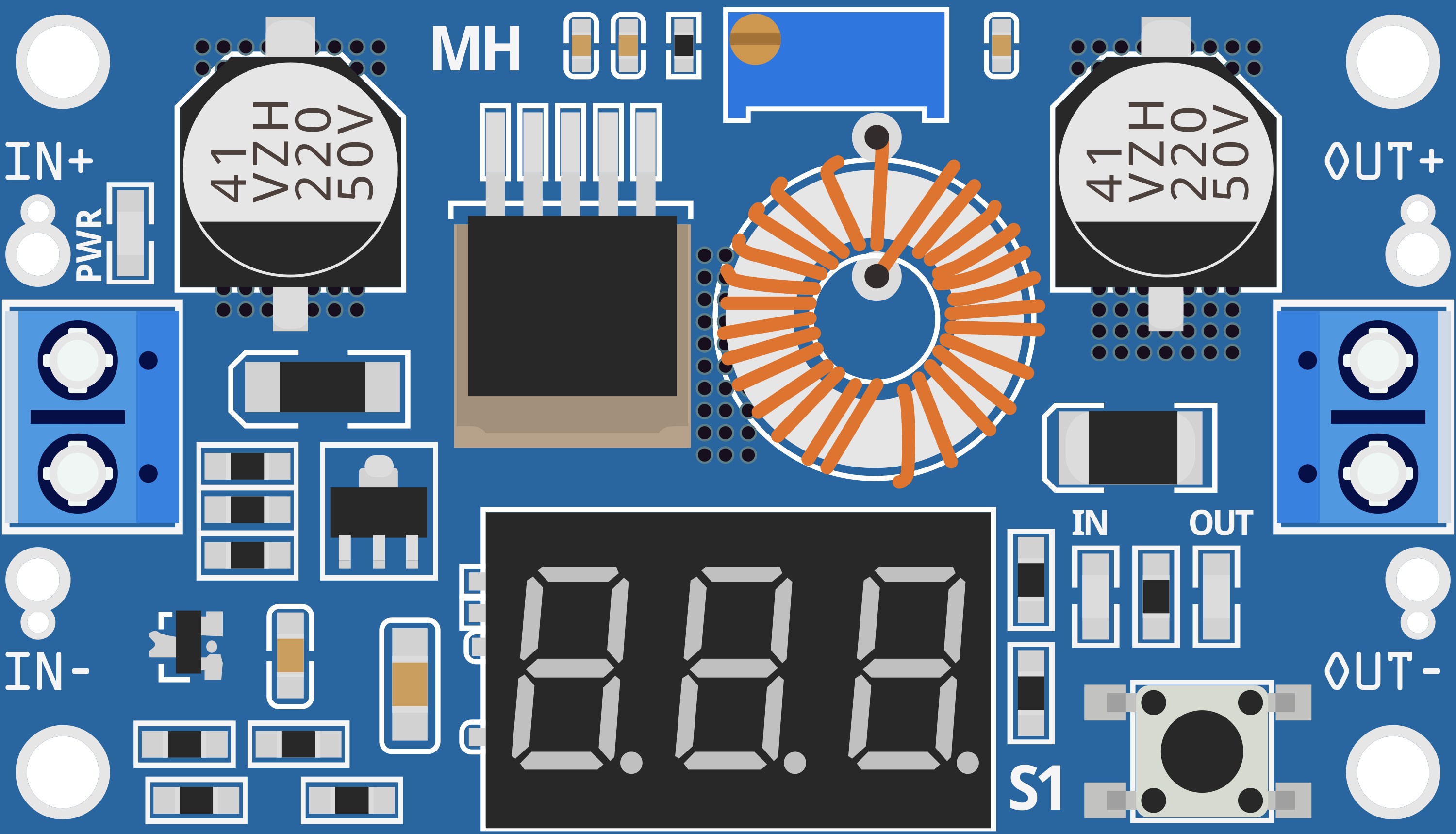
 Design with XL4015 5A DC Buck Step-down in Cirkit Designer
Design with XL4015 5A DC Buck Step-down in Cirkit DesignerIntroduction
The XL4015 is a high-efficiency DC-DC buck converter designed to step down a higher input voltage to a lower output voltage. It is capable of delivering up to 5A of output current with excellent efficiency, making it suitable for a wide range of applications. The module is equipped with an adjustable output voltage and current, allowing for flexibility in various power supply and battery charging scenarios.
Explore Projects Built with XL4015 5A DC Buck Step-down
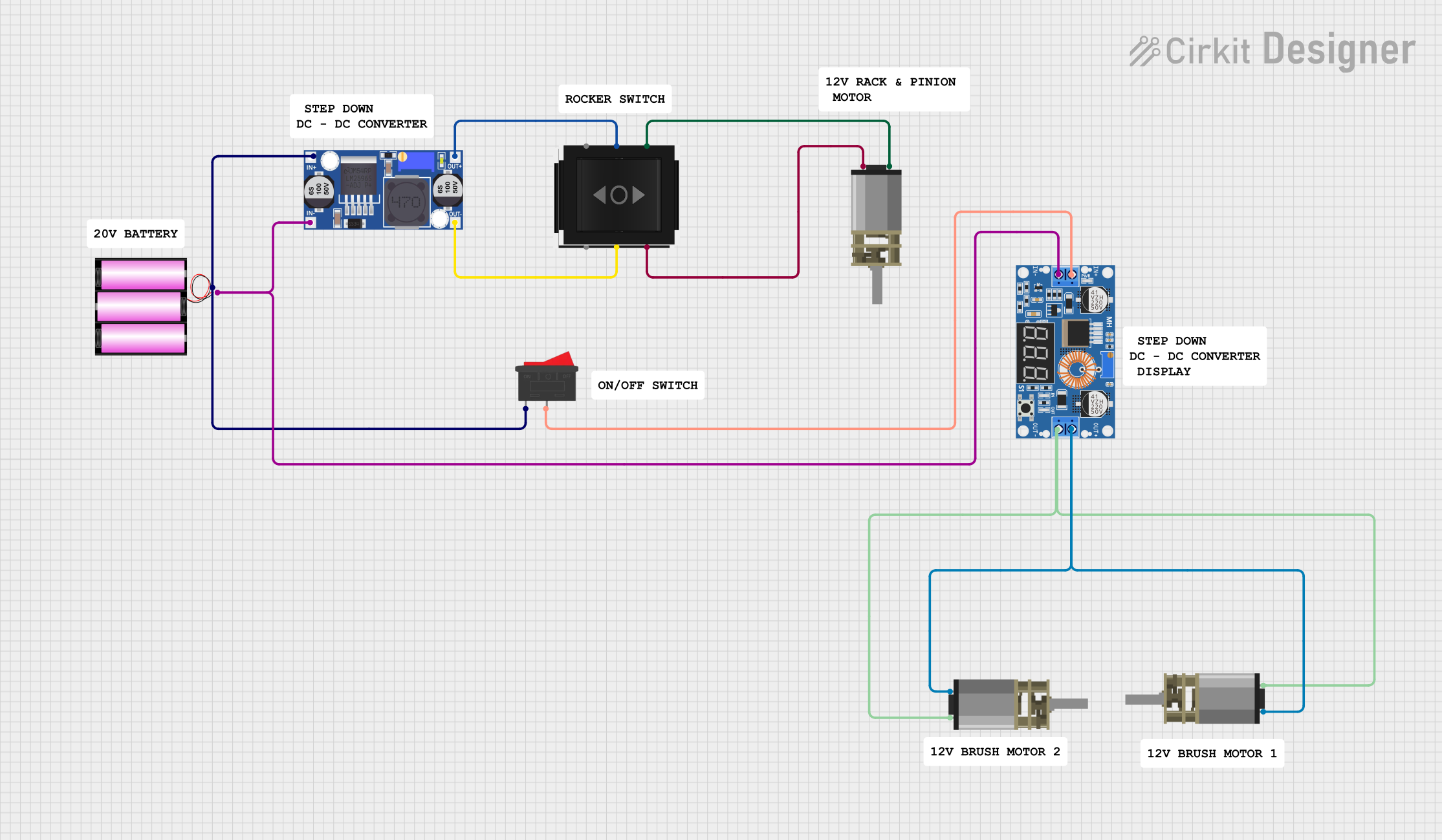
 Open Project in Cirkit Designer
Open Project in Cirkit Designer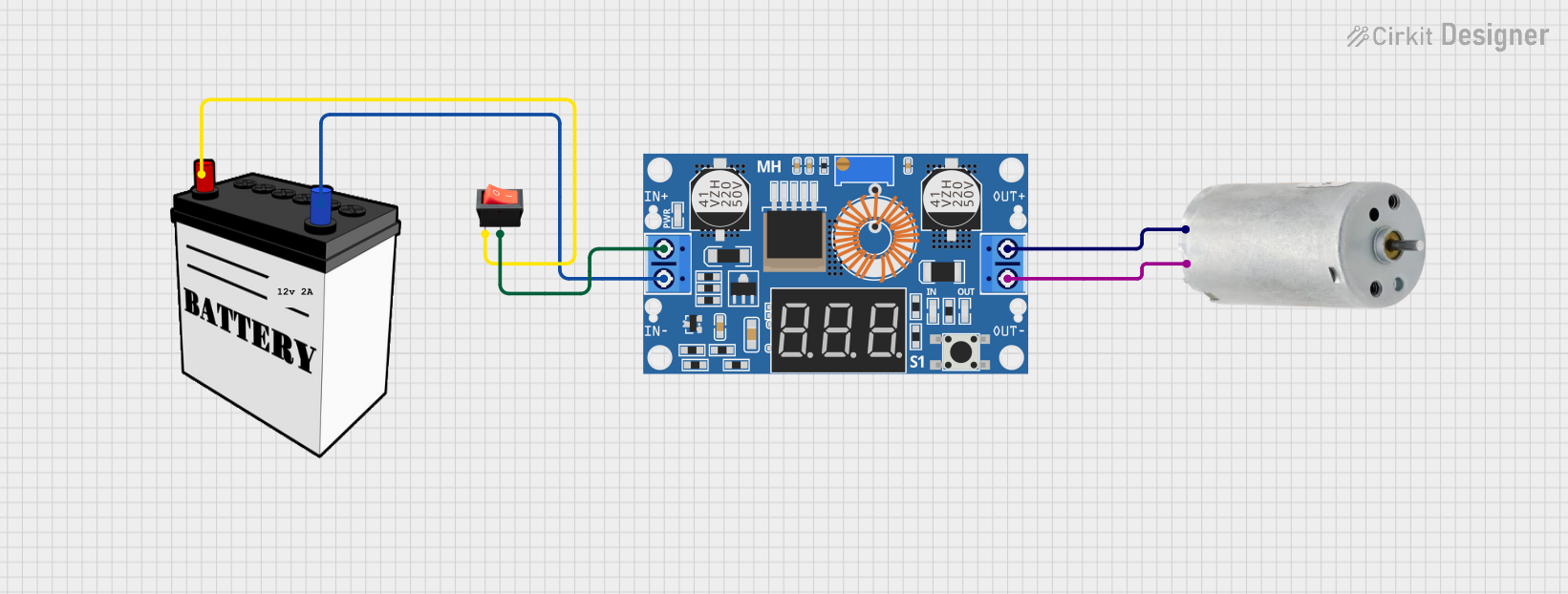
 Open Project in Cirkit Designer
Open Project in Cirkit Designer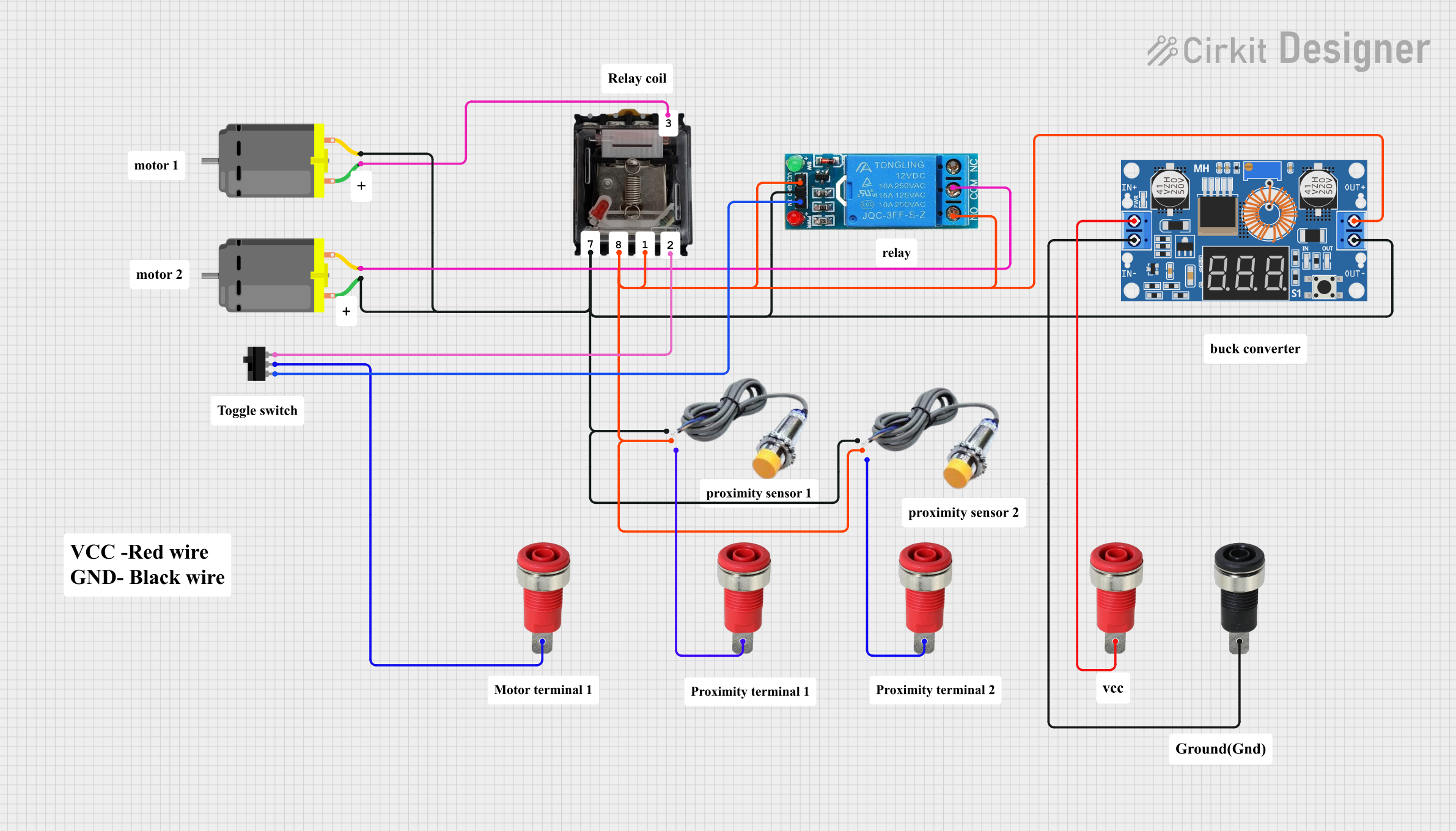
 Open Project in Cirkit Designer
Open Project in Cirkit Designer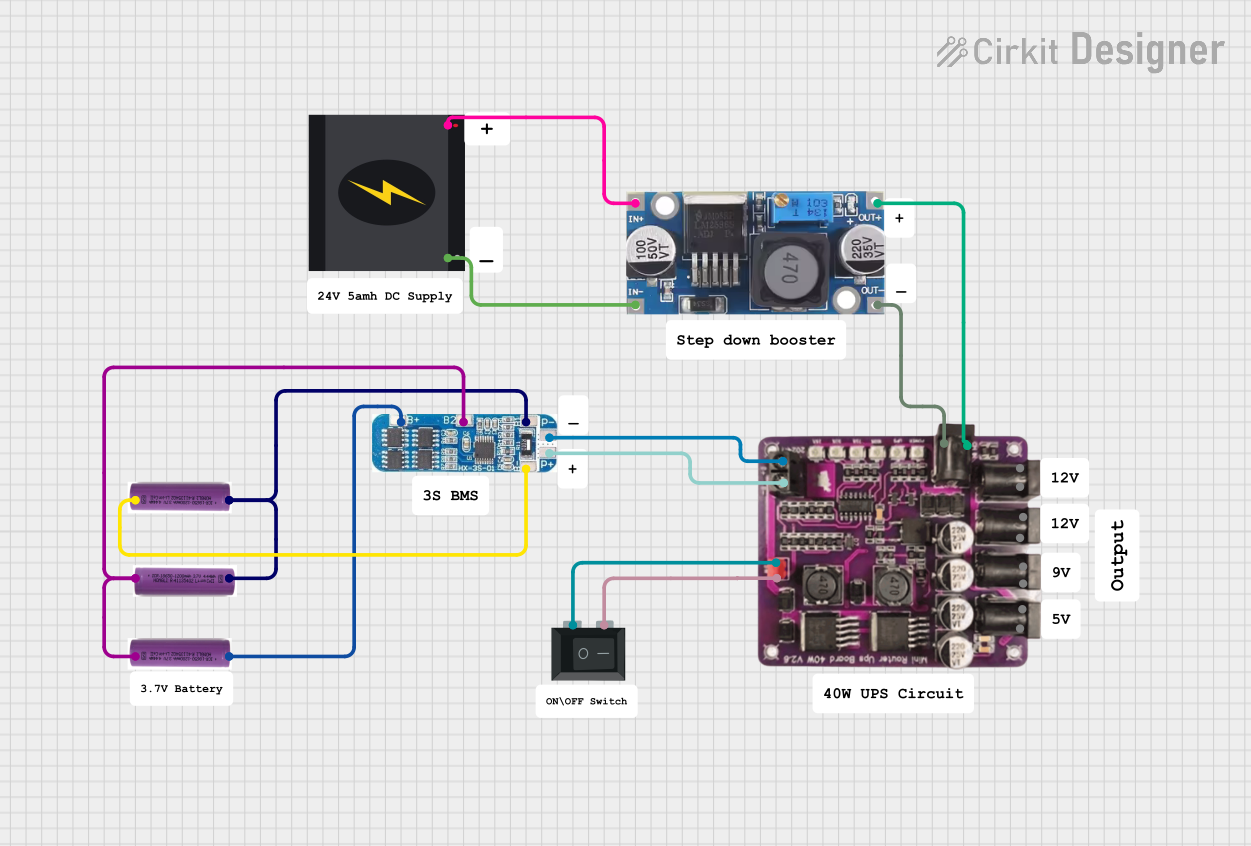
 Open Project in Cirkit Designer
Open Project in Cirkit DesignerExplore Projects Built with XL4015 5A DC Buck Step-down

 Open Project in Cirkit Designer
Open Project in Cirkit Designer
 Open Project in Cirkit Designer
Open Project in Cirkit Designer
 Open Project in Cirkit Designer
Open Project in Cirkit Designer
 Open Project in Cirkit Designer
Open Project in Cirkit DesignerCommon Applications
- Battery charging (e.g., lithium-ion, lead-acid batteries)
- Power supply for microcontrollers and embedded systems
- LED drivers
- Solar power systems
- General-purpose DC voltage regulation
Technical Specifications
The XL4015 module is designed to provide reliable performance in demanding applications. Below are its key technical details:
| Parameter | Value |
|---|---|
| Input Voltage Range | 4V to 38V |
| Output Voltage Range | 1.25V to 36V (adjustable) |
| Maximum Output Current | 5A (with proper heat dissipation) |
| Efficiency | Up to 96% |
| Switching Frequency | 180 kHz |
| Output Ripple | ≤ 30 mV |
| Operating Temperature | -40°C to +85°C |
| Dimensions | 51mm x 26mm x 14mm |
Pin Configuration and Descriptions
The XL4015 module has the following pinout:
| Pin Name | Description |
|---|---|
| VIN | Input voltage (connect to the positive terminal of the power source) |
| GND | Ground (connect to the negative terminal of the power source) |
| VOUT | Output voltage (connect to the load) |
| ADJ | Adjustment pin for setting output voltage and current |
Usage Instructions
How to Use the XL4015 in a Circuit
Connect the Input Voltage:
- Connect the positive terminal of the power source to the
VINpin. - Connect the negative terminal of the power source to the
GNDpin.
- Connect the positive terminal of the power source to the
Connect the Load:
- Connect the positive terminal of the load to the
VOUTpin. - Connect the negative terminal of the load to the
GNDpin.
- Connect the positive terminal of the load to the
Adjust the Output Voltage:
- Use the onboard potentiometer to adjust the output voltage.
- Turn the potentiometer clockwise to increase the voltage and counterclockwise to decrease it.
Set the Output Current (if applicable):
- Some XL4015 modules include a second potentiometer for current adjustment.
- Adjust the current limit to match the requirements of your load.
Power On:
- Once all connections are secure, power on the module and measure the output voltage using a multimeter to ensure it matches your desired value.
Important Considerations and Best Practices
- Heat Dissipation: The XL4015 can handle up to 5A, but proper heat dissipation is required. Use a heatsink or active cooling if operating at high currents.
- Input Voltage: Ensure the input voltage is at least 1.5V higher than the desired output voltage for stable operation.
- Output Ripple: Add a capacitor at the output to reduce voltage ripple if needed.
- Polarity Protection: The module does not have built-in reverse polarity protection. Double-check connections before powering on.
- Arduino Compatibility: The XL4015 can be used to power Arduino boards by setting the output voltage to 5V or 3.3V, depending on the board's requirements.
Example: Using XL4015 with Arduino UNO
To power an Arduino UNO with the XL4015, follow these steps:
- Set the output voltage of the XL4015 to 5V using the potentiometer.
- Connect the
VOUTpin to the Arduino'sVINpin. - Connect the
GNDpin of the XL4015 to the Arduino'sGNDpin.
Here is an example Arduino sketch to blink an LED while powered by the XL4015:
// Simple LED Blink Example
// This code blinks an LED connected to pin 13 of the Arduino UNO.
// Ensure the XL4015 output is set to 5V before powering the Arduino.
void setup() {
pinMode(13, OUTPUT); // Set pin 13 as an output
}
void loop() {
digitalWrite(13, HIGH); // Turn the LED on
delay(1000); // Wait for 1 second
digitalWrite(13, LOW); // Turn the LED off
delay(1000); // Wait for 1 second
}
Troubleshooting and FAQs
Common Issues and Solutions
No Output Voltage:
- Check the input voltage. Ensure it is within the 4V to 38V range.
- Verify all connections, especially the
VINandGNDpins. - Ensure the potentiometer is not set to the minimum output voltage.
Overheating:
- Reduce the load current if the module becomes too hot.
- Attach a heatsink or use active cooling to improve heat dissipation.
Output Voltage Fluctuations:
- Add a capacitor (e.g., 100µF) at the output to stabilize the voltage.
- Ensure the input voltage is stable and not dropping under load.
Module Not Powering On:
- Check for reverse polarity on the input connections.
- Inspect the module for physical damage or burnt components.
FAQs
Q: Can the XL4015 be used to charge lithium-ion batteries?
A: Yes, the XL4015 is suitable for charging lithium-ion batteries. Adjust the output voltage and current to match the battery's specifications.
Q: What is the maximum input voltage for the XL4015?
A: The maximum input voltage is 38V. Exceeding this value may damage the module.
Q: How do I reduce output ripple?
A: Add a low ESR capacitor (e.g., 100µF to 470µF) at the output to minimize ripple.
Q: Can I use the XL4015 to power a Raspberry Pi?
A: Yes, set the output voltage to 5V and ensure the current limit is sufficient for the Raspberry Pi's requirements.
By following this documentation, you can effectively use the XL4015 DC-DC buck converter in your projects.